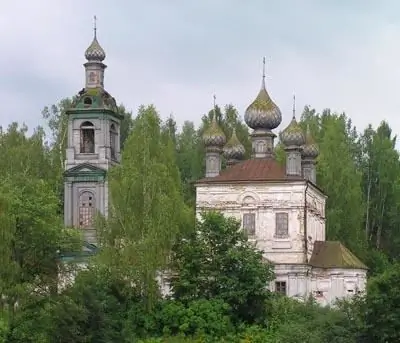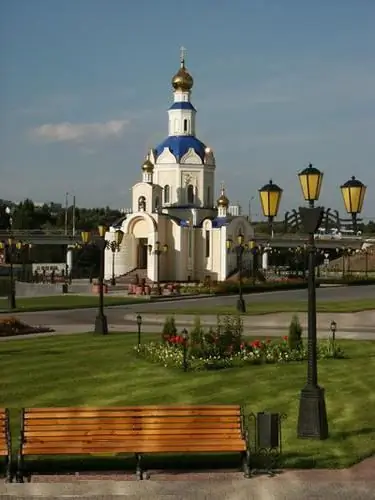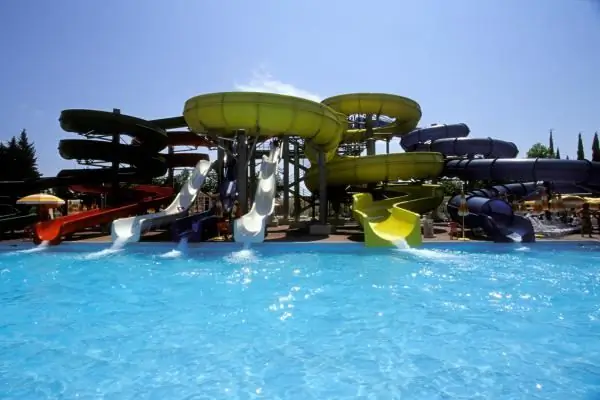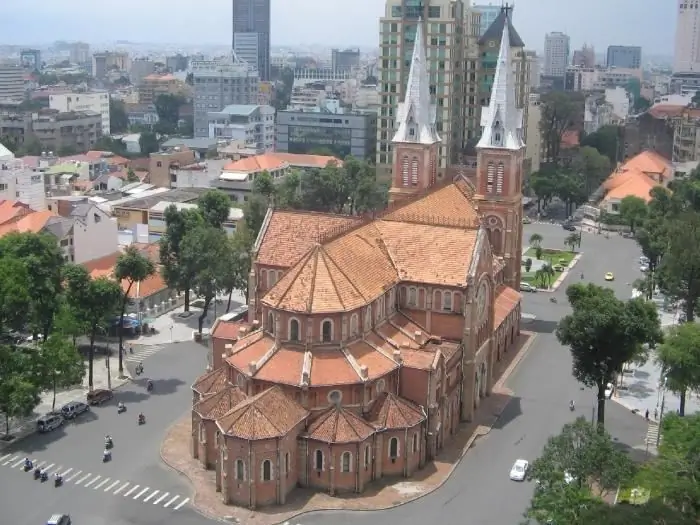- Author Harold Hamphrey [email protected].
- Public 2023-12-17 10:06.
- Last modified 2025-01-24 11:10.
Croatia is a small Slavic country, which is very lucky with its geographical position. It has the sea, islands, bays, mountains, mineral springs, a warm mild climate and magnificent nature in its arsenal. Add to this the developed infrastructure, delicious local cuisine, and we get a great place to relax. What places can you visit in Croatia? You will find photos and descriptions of the sights of the country in our article.
Balkan country
Croatia is located in the western part of the Balkan Peninsula, next to Bosnia, Montenegro, Slovenia, Serbia and Hungary. It is washed by the Adriatic Sea and stretches for 1700 kilometers along its coast. It includes more than a thousand nearby islands, of which no more than 50 are inhabited. The largest of them are Krk, Cres, Dugi Otok, Ugljan, Pag.
In the north-east, the territory of the country is represented by hilly plains, indented valleys of the Danube and its tributaries of the Sava, Drava, Kupa and Mura. Almost parallel to the coast stretches the Dinaric Highlands - the most elevated region of the country. Its highest point is Mount Dinara, which rises to1831 meters above sea level.
The country covers only 56,594 km22 and is ranked 127th in size in the world. Despite this, the nature of Croatia is considered one of the most diverse among all European countries. New biological species are still being discovered on its territory, and of those already discovered, almost 3% are endemic.
Sights of Croatia: what to see?
This country has all the prerequisites for tourism, so vacationers appeared on its horizon in the 19th century. Today it remains one of the most comfortable places to visit, offering travelers entertainment for all tastes. The country is conditionally divided into several historical regions, each of which has its own unique sights.
Istria in Croatia is located on the peninsula of the same name and is famous for its medieval towns (Rovinj, Pula, Porec, Optia), rocky coasts, as well as wine and the purest olive oil in Europe.
Beaches in Istria are mostly made of concrete slabs, so for this pleasure it is better to go to Northern Dalmatia, where the shores are strewn with small pebbles. There are both quiet family resorts and places for youth entertainment. South Dalmatia is represented by mountains, numerous islets, and luxurious resorts. Oysters are grown in this region and excellent wine is made, and its center is Dubrovnik, the most beautiful and expensive city in Croatia.
The northern part of the country is inland and less popular. However, there is also something herelook. In the central part is the capital of the state - Zagreb, which combines the heritage of the Middle Ages and the architecture of the Austro-Hungarian Empire. Further east are Zagorje and Slavonia, regions where you can immerse yourself in Croatian musical culture and rural tourism, visit ancient castles and folklore festivals.
With such a variety of interesting places, it is difficult to choose just one, so we have prepared a list of the best attractions in Croatia, according to tourists:
- Dubrovnik.
- Zagreb.
- Plitvice Lakes.
- Castle Trakošcan.
- Pula.
- Paklenica National Park.
- Split.
- Rovinj.
- Vis Island and the Blue Grotto.
- Briona Park.
- Hvar Island.
- Zagorye.
Dubrovnik
During the Middle Ages, Dubrovnik, called Ragusa, was the capital of the Dubrovnik Republic. At this time, he reached his greatest prosperity, both culturally and economically. For the rapid development of art and science, it was even nicknamed Slavic Athens.
By the way, he happened to visit the capital recently - in the series "Game of Thrones" Dubrovnik "played the role" of King's Landing. Filming significantly increased the influx of tourists, of which there are already many in the city.

The old part of Dubrovnik is surrounded by a powerful fortress wall, which is literally built into the coastal rocks. The main buildings inside the walls date from the 14th-18th centuries, among them: the Franciscan Monastery, the Prince's Palace, the Cathedral of the Virgin Mary,Sponza Palace, etc. Some of them were rebuilt on the site of older buildings destroyed by a strong earthquake in 1667.
Plitvice Lakes
Plitvice Lakes - a unique creation of nature, woven from many lakes, waterfalls and caves. They were formed thanks to the sediments of the Korana River, which created natural dams and reservoirs for its waters.
The National Park opened in 1949 and quickly became one of Croatia's most popular attractions. The water in the local lakes is so clear that even snags lying on their bottom are visible. Beech and coniferous forests grow around the reservoirs, in which forest cats, bears, roe deer and other animals live. There are about 20 caves in the rocks of Plitvica, which can be found behind the waterfalls.

Pula
It is the largest city in Istria and the oldest on the Croatian Adriatic coast. The sights of Pula belong to different historical eras, the most ancient of them appeared here before our era. In the past, the city was a Greek colony, then it became an important settlement of Ancient Rome. The amphitheater, the triumphal arch, the temple of Augustus and the Roman forum testify to his belonging to the great empire.

After the fall of Rome, Pula belonged to Venice, the Austro-Hungarian Empire and Italy. It became Croatian only in 1947. Today, you can see the Byzantine Basilica of St. Nicholas of the 6th century, the town hall of the 13th century and the Kastel fortress, which overlook thethe whole city.
At one time, the author of the famous novel "Ulysses" writer James Joyce visited Poole. A monument to him is located on the terrace of a small cafe Uliks, which is easy to find on Sergiev Street near the Golden Gate.
Split
The second largest city in Croatia after Zagreb is Split. It is not at all like Dubrovnik or the tiny towns of Istria. In this city, different eras, different and dissimilar architectural styles intertwined. Modern buildings and shops in it coexist with monuments of the 15th century, and even with buildings erected at the beginning of our era.

The main attraction of Split in Croatia is Diocletian's Palace, built in 305. It is the best preserved example of Roman palace architecture. The complex occupies a large part of the old city. Today, boutiques, hotels, cafes and restaurants are located within its walls. Part of the palace is the inner open-air square, the temple of Jupiter, converted into a baptistery, and the Catholic Cathedral of St. Duim, which was once the mausoleum of Diocletian. Near Split are the ruins of the ancient city of Salona, founded by the Illyrians before our era.
Vis
Vis is the most inhabited island in Croatia from the mainland. It is located 50 kilometers from Split and 60 from Makarska. To get to it, you need to sail past the islands of Brac and Hvar. It was from him that the colonization of the Adriatic by the Illyrians, and then by the Greeks, began. On Vis there is a Franciscan monastery, ancient amphitheaters and many medievalchurches.
Another attraction of Croatia is Komiža, a small village where fishing is the main occupation. There is even a museum dedicated to this craft. Around it are also plantations of grapes and the fragrant spice of rosemary. Boats depart from the village to the tiny island of Bisevo, in the bay of which there is the Blue Grotto. Part of it is filled with sea water and in sunny weather for several hours a day the light is refracted in it so that the entire cave turns blue.

Zagorie
Zagorje is a historical region of Croatia. The sights of this region are significantly different from those on the coast. The architecture of local cities belongs to later periods (Renaissance, Baroque), and nature is represented by flowing green hills.

The most interesting places in the region are the city of Varaždin with Trakoščan castle, Čakovec with Zrinski Palace, Krapina and its Museum of Evolution, the Museum of the Old Village in Krumlov. There are several balneological resorts in Zagorje, such as Varazdinske Toplice, Krapinske Toplice, Stubicke Toplice, Tuhelske and Daruvanske Toplice. In the village of Ivanich-Grad there are sources of medicinal oil.






